 For reasons both maddeningly obvious and impossibly elusive, young adult literature is particularly prone to categorization and trends--fenced in by labels, discriminated for or against, sold according to headline. Teeth sink. Wings ascend. Murderous games hold court. Landscapes are annihilated, and then annihilated again. It's a package deal.
For reasons both maddeningly obvious and impossibly elusive, young adult literature is particularly prone to categorization and trends--fenced in by labels, discriminated for or against, sold according to headline. Teeth sink. Wings ascend. Murderous games hold court. Landscapes are annihilated, and then annihilated again. It's a package deal.
Those hoping to decode what's next? for books written for the young might do well to study the 2012 slate of Michael L. Printz and Newbery books. Categorization (thankfully) sits on a shelf. Weird has been elevated to noteworthy. The unexpected wins the prize.
 The winner of the Printz award is John Corey Whaley's Where Things Come Back--a story about brothers, disappearance and the "apparent return of a long-extinct woodpecker." We haven't seen that before in a YA book description. We don't even know how to slot expectations. We do know that the book has been labeled thought-provoking, wonderful and, yes, weird, that it has been called--and what is not to love about this word?--rare.
The winner of the Printz award is John Corey Whaley's Where Things Come Back--a story about brothers, disappearance and the "apparent return of a long-extinct woodpecker." We haven't seen that before in a YA book description. We don't even know how to slot expectations. We do know that the book has been labeled thought-provoking, wonderful and, yes, weird, that it has been called--and what is not to love about this word?--rare.
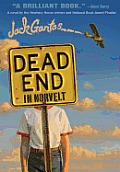 Rare might also be applied to the Newbery Medal winner, Dead End in Norvelt, a Jack Gantos creation featuring, among other vaunted things, bloody noses, obituary writing, Hells Angels, Eleanor Roosevelt history, and autobiography with a fantastical punch. Weird once again is right. Oddball, deliciously, is good. The prodigiously and brilliantly haven't-seen-it-before wins the Newbery and, with the Newbery, a readerly crowd.
Rare might also be applied to the Newbery Medal winner, Dead End in Norvelt, a Jack Gantos creation featuring, among other vaunted things, bloody noses, obituary writing, Hells Angels, Eleanor Roosevelt history, and autobiography with a fantastical punch. Weird once again is right. Oddball, deliciously, is good. The prodigiously and brilliantly haven't-seen-it-before wins the Newbery and, with the Newbery, a readerly crowd.
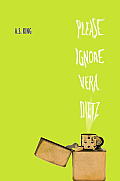 It's all quite promising, I think--an indication that we're poised on the edge of a new era in which YA and middle grade books that lie outside code and classification will be given their proper due. The 2012 Printz and Newbery winners aren't just leading the way. So is A.S. King, who, with her vaguely magically realistic novels (Please Ignore Vera Dietz and Everybody Sees the Ants), elevates dreams and visions into a place of rescue, as is Markus Zusak, whose The Book Thief was narrated by a most-conflicted Death. Books like these aren't sold as type. They sell because they're good.
It's all quite promising, I think--an indication that we're poised on the edge of a new era in which YA and middle grade books that lie outside code and classification will be given their proper due. The 2012 Printz and Newbery winners aren't just leading the way. So is A.S. King, who, with her vaguely magically realistic novels (Please Ignore Vera Dietz and Everybody Sees the Ants), elevates dreams and visions into a place of rescue, as is Markus Zusak, whose The Book Thief was narrated by a most-conflicted Death. Books like these aren't sold as type. They sell because they're good.
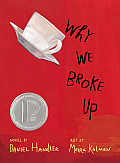 There's more that the 2012 Printz and Newbery lists can teach us. Consider the Printz honoree Why We Broke Up, a teen novel written by Daniel Handler and illustrated by Maira Kalman. It's the illustrated by part that's the point: a teen book with pictures. We've seen an explosion of this book species in recent months--Ransom Riggs's Miss Peregrine's Home for Peculiar Children (illustrated with b&w photographs); Maile Meloy's The Apothecary (images by Ian Schoenherr); Patrick Ness's A Monster Calls (illustrated by Jim Kay); and Scott Westerfeld's Leviathan series (illustrated by Keith Thompson), among the many. Clearly, illustrated books aren't just for younger readers any more, and by honoring Why We Broke Up, the Printz committee underscores another emerging trend: the ascendance of the illustrated YA novel.
There's more that the 2012 Printz and Newbery lists can teach us. Consider the Printz honoree Why We Broke Up, a teen novel written by Daniel Handler and illustrated by Maira Kalman. It's the illustrated by part that's the point: a teen book with pictures. We've seen an explosion of this book species in recent months--Ransom Riggs's Miss Peregrine's Home for Peculiar Children (illustrated with b&w photographs); Maile Meloy's The Apothecary (images by Ian Schoenherr); Patrick Ness's A Monster Calls (illustrated by Jim Kay); and Scott Westerfeld's Leviathan series (illustrated by Keith Thompson), among the many. Clearly, illustrated books aren't just for younger readers any more, and by honoring Why We Broke Up, the Printz committee underscores another emerging trend: the ascendance of the illustrated YA novel.
 There's one more key signal in the prizes announced this week--and that is the focus on history, not just U.S. history, but on stories of a global past. Craig Silvey's Jasper Jones sits on the Printz list--a boy's mystery set in 1960s Australia. Inside Out & Back Again, the National Book Award winner by Thanhha Lai, is a Newbery Honor book; history is here, too, and so is Vietnam.
There's one more key signal in the prizes announced this week--and that is the focus on history, not just U.S. history, but on stories of a global past. Craig Silvey's Jasper Jones sits on the Printz list--a boy's mystery set in 1960s Australia. Inside Out & Back Again, the National Book Award winner by Thanhha Lai, is a Newbery Honor book; history is here, too, and so is Vietnam.
 Those who doubt that history will lie at the heart of future YA books might consider the enormous international success of Between Shades of Gray, Ruta Septys's debut novel about a 15-year-old Lithuanian girl sent to a Stalin work camp, or the deserved popularity of Mitali Perkins, who writes skillfully about places like India in the mid-1970s. Well-researched, well-written historical novels are, for obvious reasons, favorites among teachers and librarians, parents and grandparents; they use their potent powers of persuasion to suggest that stories framed by the past count most explicitly today.
Those who doubt that history will lie at the heart of future YA books might consider the enormous international success of Between Shades of Gray, Ruta Septys's debut novel about a 15-year-old Lithuanian girl sent to a Stalin work camp, or the deserved popularity of Mitali Perkins, who writes skillfully about places like India in the mid-1970s. Well-researched, well-written historical novels are, for obvious reasons, favorites among teachers and librarians, parents and grandparents; they use their potent powers of persuasion to suggest that stories framed by the past count most explicitly today.
Ten years ago, when I chaired the National Book Awards Young People's Literature Jury, I yearned for the dawning of a movement much like the one that I believe we are seeing today--for a time when the dominant YA books were the risk-taking books, tantalizing in their shape and form, fresh and original in their language, soulful. I believed then, and I believe now, that enduring YA books have the capacity to alert, embolden and inspire; to live outside marketing labels; to stretch young readers' ideas about how words can take them to places they've never gone. --Beth Kephart
Beth Kephart is the author of numerous young adult books, most recently You Are My Only (Egmont USA). Her 14th book, Small Damages, is set in Seville and due out from Philomel in July.
 The Virginia Senate Finance committee voted unanimously yesterday to advance a bill that would require Amazon to collect the state's 5% sales tax, amid talk that Governor Bob McDonnell's administration "has been having discussions with Amazon to reach an agreement on the sales tax issue," the Richmond Times-Dispatch reported. The meeting was attended by owners and managers of approximately 50 bricks-and-mortar retailers, who support the legislation.
The Virginia Senate Finance committee voted unanimously yesterday to advance a bill that would require Amazon to collect the state's 5% sales tax, amid talk that Governor Bob McDonnell's administration "has been having discussions with Amazon to reach an agreement on the sales tax issue," the Richmond Times-Dispatch reported. The meeting was attended by owners and managers of approximately 50 bricks-and-mortar retailers, who support the legislation. Senator Frank Wagner (R, Virginia Beach), who introduced the bill, told the committee: "I just want to level the playing field. Let the ones with the best products, the best innovation, the best ideas and the cheapest prices win that particular battle. I think it is time now that we start to address this."
Senator Frank Wagner (R, Virginia Beach), who introduced the bill, told the committee: "I just want to level the playing field. Let the ones with the best products, the best innovation, the best ideas and the cheapest prices win that particular battle. I think it is time now that we start to address this."













 Last Thursday, the Standard Shop in New York City hosted an event for Vahram Muratyan and his new book, Paris versus New York: A Tally of Two Cities (Penguin) that drew 300 people.
Last Thursday, the Standard Shop in New York City hosted an event for Vahram Muratyan and his new book, Paris versus New York: A Tally of Two Cities (Penguin) that drew 300 people. Jai Alai IPA, Cigar City Brewing, Tampa, Fla. Store: Inkwood Books
Jai Alai IPA, Cigar City Brewing, Tampa, Fla. Store: Inkwood Books HBO Films has released a teaser trailer for
HBO Films has released a teaser trailer for 

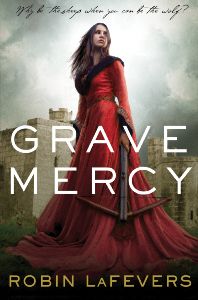 Part spy novel, part feminist coming-of-age tale, LaFevers's riveting story set in 15th-century Brittany begins with Ismae Rienne describing a "deep red stain that runs from my left shoulder down to my right hip." It's a trail left by the herbwitch's poison at Ismae's birth. "That I survived, according to the herbwitch, is no miracle but a sign I have been sired by the god of death himself," Ismae continues.
Part spy novel, part feminist coming-of-age tale, LaFevers's riveting story set in 15th-century Brittany begins with Ismae Rienne describing a "deep red stain that runs from my left shoulder down to my right hip." It's a trail left by the herbwitch's poison at Ismae's birth. "That I survived, according to the herbwitch, is no miracle but a sign I have been sired by the god of death himself," Ismae continues.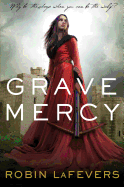
 For reasons both maddeningly obvious and impossibly elusive, young adult literature is particularly prone to categorization and trends--fenced in by labels, discriminated for or against, sold according to headline. Teeth sink. Wings ascend. Murderous games hold court. Landscapes are annihilated, and then annihilated again. It's a package deal.
For reasons both maddeningly obvious and impossibly elusive, young adult literature is particularly prone to categorization and trends--fenced in by labels, discriminated for or against, sold according to headline. Teeth sink. Wings ascend. Murderous games hold court. Landscapes are annihilated, and then annihilated again. It's a package deal. The winner of the Printz award is John Corey Whaley's Where Things Come Back--a story about brothers, disappearance and the "apparent return of a long-extinct woodpecker." We haven't seen that before in a YA book description. We don't even know how to slot expectations. We do know that the book has been labeled thought-provoking, wonderful and, yes, weird, that it has been called--and what is not to love about this word?--rare.
The winner of the Printz award is John Corey Whaley's Where Things Come Back--a story about brothers, disappearance and the "apparent return of a long-extinct woodpecker." We haven't seen that before in a YA book description. We don't even know how to slot expectations. We do know that the book has been labeled thought-provoking, wonderful and, yes, weird, that it has been called--and what is not to love about this word?--rare. Rare might also be applied to the Newbery Medal winner, Dead End in Norvelt, a Jack Gantos creation featuring, among other vaunted things, bloody noses, obituary writing, Hells Angels, Eleanor Roosevelt history, and autobiography with a fantastical punch. Weird once again is right. Oddball, deliciously, is good. The prodigiously and brilliantly haven't-seen-it-before wins the Newbery and, with the Newbery, a readerly crowd.
Rare might also be applied to the Newbery Medal winner, Dead End in Norvelt, a Jack Gantos creation featuring, among other vaunted things, bloody noses, obituary writing, Hells Angels, Eleanor Roosevelt history, and autobiography with a fantastical punch. Weird once again is right. Oddball, deliciously, is good. The prodigiously and brilliantly haven't-seen-it-before wins the Newbery and, with the Newbery, a readerly crowd. It's all quite promising, I think--an indication that we're poised on the edge of a new era in which YA and middle grade books that lie outside code and classification will be given their proper due. The 2012 Printz and Newbery winners aren't just leading the way. So is A.S. King, who, with her vaguely magically realistic novels (Please Ignore Vera Dietz and Everybody Sees the Ants), elevates dreams and visions into a place of rescue, as is Markus Zusak, whose The Book Thief was narrated by a most-conflicted Death. Books like these aren't sold as type. They sell because they're good.
It's all quite promising, I think--an indication that we're poised on the edge of a new era in which YA and middle grade books that lie outside code and classification will be given their proper due. The 2012 Printz and Newbery winners aren't just leading the way. So is A.S. King, who, with her vaguely magically realistic novels (Please Ignore Vera Dietz and Everybody Sees the Ants), elevates dreams and visions into a place of rescue, as is Markus Zusak, whose The Book Thief was narrated by a most-conflicted Death. Books like these aren't sold as type. They sell because they're good. There's more that the 2012 Printz and Newbery lists can teach us. Consider the Printz honoree Why We Broke Up, a teen novel written by Daniel Handler and illustrated by Maira Kalman. It's the illustrated by part that's the point: a teen book with pictures. We've seen an explosion of this book species in recent months--Ransom Riggs's Miss Peregrine's Home for Peculiar Children (illustrated with b&w photographs); Maile Meloy's The Apothecary (images by Ian Schoenherr); Patrick Ness's A Monster Calls (illustrated by Jim Kay); and Scott Westerfeld's Leviathan series (illustrated by Keith Thompson), among the many. Clearly, illustrated books aren't just for younger readers any more, and by honoring Why We Broke Up, the Printz committee underscores another emerging trend: the ascendance of the illustrated YA novel.
There's more that the 2012 Printz and Newbery lists can teach us. Consider the Printz honoree Why We Broke Up, a teen novel written by Daniel Handler and illustrated by Maira Kalman. It's the illustrated by part that's the point: a teen book with pictures. We've seen an explosion of this book species in recent months--Ransom Riggs's Miss Peregrine's Home for Peculiar Children (illustrated with b&w photographs); Maile Meloy's The Apothecary (images by Ian Schoenherr); Patrick Ness's A Monster Calls (illustrated by Jim Kay); and Scott Westerfeld's Leviathan series (illustrated by Keith Thompson), among the many. Clearly, illustrated books aren't just for younger readers any more, and by honoring Why We Broke Up, the Printz committee underscores another emerging trend: the ascendance of the illustrated YA novel. There's one more key signal in the prizes announced this week--and that is the focus on history, not just U.S. history, but on stories of a global past. Craig Silvey's Jasper Jones sits on the Printz list--a boy's mystery set in 1960s Australia. Inside Out & Back Again, the National Book Award winner by Thanhha Lai, is a Newbery Honor book; history is here, too, and so is Vietnam.
There's one more key signal in the prizes announced this week--and that is the focus on history, not just U.S. history, but on stories of a global past. Craig Silvey's Jasper Jones sits on the Printz list--a boy's mystery set in 1960s Australia. Inside Out & Back Again, the National Book Award winner by Thanhha Lai, is a Newbery Honor book; history is here, too, and so is Vietnam. Those who doubt that history will lie at the heart of future YA books might consider the enormous international success of Between Shades of Gray, Ruta Septys's debut novel about a 15-year-old Lithuanian girl sent to a Stalin work camp, or the deserved popularity of Mitali Perkins, who writes skillfully about places like India in the mid-1970s. Well-researched, well-written historical novels are, for obvious reasons, favorites among teachers and librarians, parents and grandparents; they use their potent powers of persuasion to suggest that stories framed by the past count most explicitly today.
Those who doubt that history will lie at the heart of future YA books might consider the enormous international success of Between Shades of Gray, Ruta Septys's debut novel about a 15-year-old Lithuanian girl sent to a Stalin work camp, or the deserved popularity of Mitali Perkins, who writes skillfully about places like India in the mid-1970s. Well-researched, well-written historical novels are, for obvious reasons, favorites among teachers and librarians, parents and grandparents; they use their potent powers of persuasion to suggest that stories framed by the past count most explicitly today.